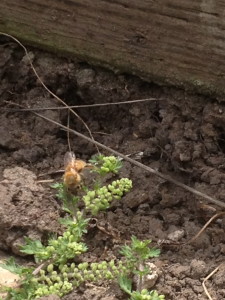Dirty Movies
“A soil is not a pile of dirt. It is a transformer, a body that organizes raw materials into tissues. These are the tissues that become mother to all organic life,”(Dirt, the Ecstatic Skin of the Earth by William Bryant Logan, p181).*
Below are several resources to increase your understanding and appreciation of Soil.
In the 4 ½ minute film “The Soil Story” (www.thesoilstory.com) we can quickly get the essentials of how proper treatment of the soil can help in carbon sequestration which can in turn help mitigate causes of climate change. On the Soil Story website we can learn action steps to take on behalf of the soil, and sign a petition of immediate importance.
To understand more deeply the intricacies of the human/soil relationships, we can immerse ourselves in the book Dirt, the Ecstatic Skin of the Earth, by William Bryant Logan, and/or watch the magnificent documentary film inspired by this book: Dirt, the Movie. (www.dirtthemovie.org) And to wholeheartedly enter the elegant and multifaceted realm of Dirt, we can go on to view The Symphony of the Soil (www.symphonyofthesoil.com) a film by Deborah Koons Garcia, which brings science, art and activism to bear on the long, long history of soil.
Logan’s book Dirt combines careful science with a deeply reverent attitude toward soil, expressed through often poetic language, in a form that is accessible and engaging to the non-scientist reader.
“Soil appears where life does, and its characteristic is to build when erosion destroys. On the face of a stone a lichen takes hold The lichen digests minerals and is itself digested by the microbes in the air. The combined detritus falls, fills a cleft in the rock. A club moss roots in this compost, lives, and dies. The cleft overflows. Grass seeds blow in, grass grows.”(p.96)
Logan gives us a lot of history of the relationship of humans with soil, including what has lead up to catastrophes like the Dust Bowl of the 30’s and the present crises of combined droughts and depleted soils. And he points the way toward renewing a better relationship. “Only by replacing what you take can you keep a soil fertile…To be responsible to the soil is to respond to its gifts with our own.” (p.29)
The two documentary films cinematically illustrate what the soil scientists have learned about how soil is formed, how it behaves, and how it has been degraded by the machinations of humanity. Fortunately, they also introduce us to the people, organizations and movements which are working to save the soil.
Dirt the Movie(by Bill Benenson, Gene Rosow and Eleanore Dailly) after giving us a look at the 4 billion years of evolution that created dirt and the two centuries or so that have seen its degradation through urban development, mining, deforestation, industry and industrial agriculture, goes on to highlight the works of visionaries like Vandana Shiva, Wangan Maathai--founder of the Green Belt Movement--and many leaders in the field of sustainable agriculture.
Like plunging our hands into rich fertile soil, watching these films that dig deep in the dirt can help bring us all to our senses and inspire us to find ways of giving back.
“One motive for protecting the soil is the certainty that it is fragile. ..it is a recent and ephemeral product. We owe it our lives and our energy, and the bodies we give back to it are not payment enough.”(p.37)
*Quotes are from William Bryant Logan, Dirt, the Ecstatic Skin of the Earth New York 1995




